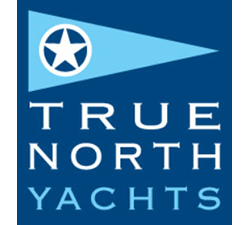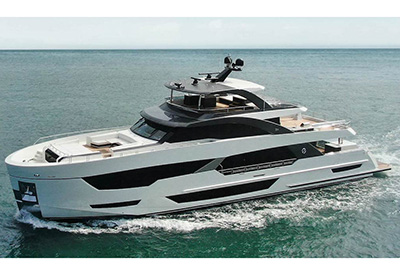Largest Viking Ship in the World Sets Sail for Toronto

May 9, 2016
A courageous crew of sailors from around the world set sail last week aboard the world’s largest Viking ship. Departing from her homeport in Haugesund, Norway, on Sunday, April 24, Draken Harald Hårfagre and her crew committed to the daring journey to cross the North Atlantic for her Expedition America. The great ship will be joining the fleet of international tall ships in Toronto for the Redpath Waterfront Festival presented by PortsToronto from July 1 to 3.
The Expedition America project curator, Sigur Aase, wanted Draken Harald Hårfagre to follow in the wake of one of the most challenging Viking explorations – the Viking discovery of the New World. Built with archaeological knowledge of ships, extensive research of Norse literature and using boatbuilding traditions, Draken Harald Hårfagre is what Vikings considered a “Great Ship.” Before casting her sails for Expedition America, Draken Harald Hårfagre was celebrated with a Dragon’s Head Ceremony. The dragon’s head is traditionally not mounted until departure for long journeys to defend the ship and her crew from sea monsters, bad weather, evil creatures and unexpected raids. The ship’s mythological head was revealed in the ceremony, and the great adventure of sailing the historical route was wished “Fair winds and following seas.”
“Even though she is a great sailing ship, no one can predict the weather conditions along the way and the crew will face a real challenge,” states Björn Ahlander, captain of Draken Harald Hårfagre. “It’s hard to say which stretch will be the toughest before we’ve set sail, but the waters of Cape Farewell by the coast of Greenland are among the most dangerous waters in the world. It’s extremely windswept and there will probably be a lot of ice.”
 Draken is crewed by 32 sailors from Norway, Sweden, USA, Canada (Jeff Lievre, Vancouver Island), Estonia, Russia, Spain, France and the UK, all of who were chosen from over 4,000 male and female applicants worldwide. Draken Harald Hårfagre does not provide any shelter for the crew other than a tent where the rotating crew sleep, 16 at a time, four hours work and four hours sleep. The crew will take on the challenge of crossing the North Atlantic Ocean, taking the same route the original Vikings travelled 1,000 years ago from Norway to Iceland, Greenland, Canada and finally the USA.
Draken is crewed by 32 sailors from Norway, Sweden, USA, Canada (Jeff Lievre, Vancouver Island), Estonia, Russia, Spain, France and the UK, all of who were chosen from over 4,000 male and female applicants worldwide. Draken Harald Hårfagre does not provide any shelter for the crew other than a tent where the rotating crew sleep, 16 at a time, four hours work and four hours sleep. The crew will take on the challenge of crossing the North Atlantic Ocean, taking the same route the original Vikings travelled 1,000 years ago from Norway to Iceland, Greenland, Canada and finally the USA.
“It is a challenge to tame the Dragon, which makes reliable seamanship extremely important for the expedition,” adds Ahlander. “The work onboard is heavy, wet and cold, therefore it demands a great physical and mental condition. There will be no privacy for the crew, they will be exposed to rain and cold weather with only short breaks to sleep.”
Draken Harald Hårfagre is 114 ft long and has an oak hull, a Douglas fir mast, hemp rigging and a 260 square metre silk sail. If there is not enough wind, Draken Harald Hårfagre is equipped with 50 oars that take two oarsmen per oar to row. For voyage updates, visit https://www.facebook.com/DrakenHaraldHarfagre.





























